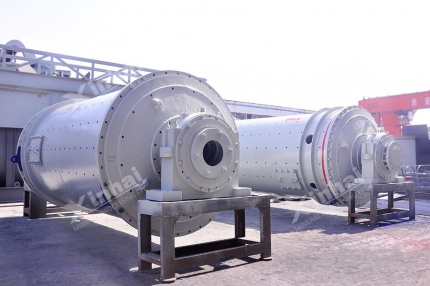Good working conditions can strengthen the grinding outcomes of overflow type ball mills. Therefore, in practical operation, workers need to continuously adjust overflow-type ball mills working conditions so that they can work at an optimal state. Then, what are the working conditions influencing the overflow ball mills' outcome?
Use the table of contents below to navigate through the guide:
01Mills Rotary Speed and Filling Ratio
Overflow ball mill's rotary speed influences the motion state of steel balls. Under the low-speed circumstance, steel balls drop after rising to a certain level, with grinding as the main acting force supplemented by the impact. If increasing the speed, steel balls are thrown and fall, with impact as the main acting force supplemented by grinding. At higher speed, steel balls will do centrifugal exercise instead of grinding work. When at a lower rotary speed, overflow ball mills have a better grinding outcome. It does the same when the steel balls filling ratio is 40% to 50%.

02Steel Balls Size
Under a certain filling ratio, the smaller steel balls are, the better the grinding outcome is. However, as steel balls' size becomes smaller, the impact between steel balls and ore particles will accordingly get weaker, which hinders the grinding effect. Consequently, as to materials with certain particle sizes, there always exists an optimal steel balls size capable of achieving a perfect grinding outcome.
03Pulp Density and Feeding Speed
Increasing pulp density in a certain condition, the viscosity of ore pulp will strengthen, making it easier to adhere to ball mills, thus enhance the mill productivity to improve the grinding outcome. But when the pulp density is too high, the ropy ore slurry will have buffer action on ball mills grinding operation. Higher feeding speed can contribute to timely ore discharge, while excessively fast speed likely leads to the overload phenomenon. Therefore, it is necessary to set appropriate pulp density and feeding speed for the sake of better grinding performance.

04Mill Circulating Load
Properly increase the mill circulating speed is conducive to the discharge of ore particles and improves the mill grinding performance. Usually, the suitable value for mill circulating load is 150% to 600%.
Xinhai is committed to adjusting the mills grinding performance to the best state. And it can change overflow ball mills working conditions like rotary speed and filling ratio in accordance with customer requirement, thus increasing the interests of customers by increasing concentrate grade and the recovery rate in the subsequent separating process.


 marketing@ytxinhai.com
marketing@ytxinhai.com  0086 13810327080
0086 13810327080 






































































































 CHAT
CHAT MESSAGE
MESSAGE

.jpg)


